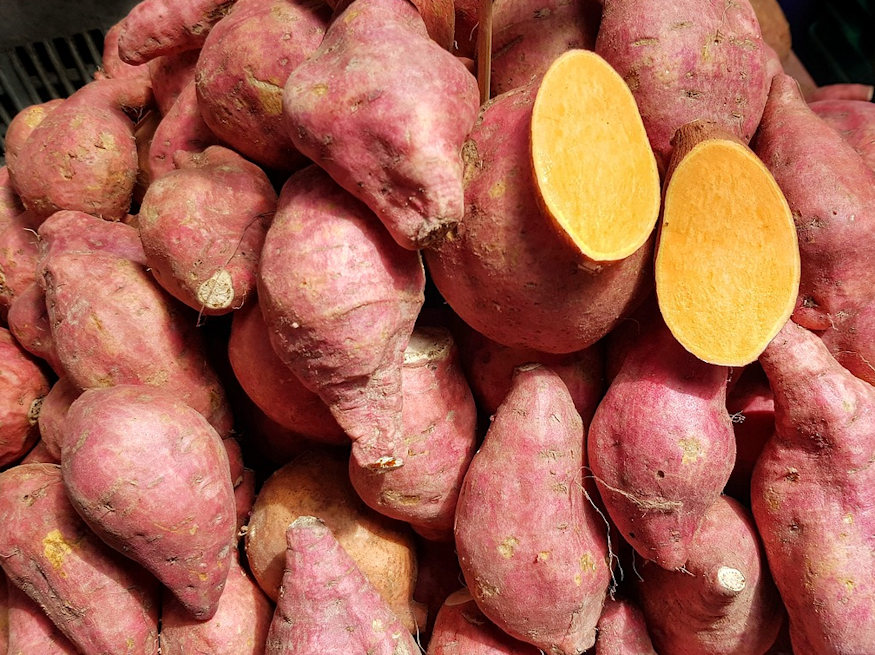Sweet potatoes, often mistaken for mere ornamental plants, are, in fact, versatile vegetables that can be a delightful addition to your culinary repertoire. Thanks to the latest advancements in farming techniques, it’s easier than ever to cultivate these delectable tubers right in your very own vegetable garden, with a significantly reduced growth period of just 100 days. But before you dive into the world of sweet potatoes, let’s explore some fascinating tidbits about these nutritious wonders.
The Multicolored Marvels
Sweet potatoes come in a stunning array of colors, each with its own unique flavor profile. ‘Bonita’ stands out with its yellow, potato-like exterior, while ‘Burgundy’ boasts typically orange tubers that are as vibrant in hue as they are in taste. For those who prefer something a bit different, ‘Murasaki’ offers a twist with its snowy-white flesh. The diversity of sweet potato varieties ensures there’s something to tantalize every palate.
Battling the Rogue Shoots
When cultivating sweet potatoes, it’s crucial to prevent long shoots from re-rooting, as this can divert energy away from tuber growth. To thwart this, consider covering the soil around the plant with mulch or expertly tying up the errant shoots. Alternatively, you can fashion a makeshift trellis using three stakes, cleverly arranged to resemble a tent, effectively guiding the shoots upward. This ingenious approach even allows you to nurture sweet potatoes in containers on your terrace or balcony. Remember, sweet potatoes thrive in sunny spots and require nutrients in moderation to flourish.
Timing is Everything
To savor the sweetest, freshest flavors, it’s essential to time your sweet potato harvest correctly. Aim to collect your bounty after the first frost sets in. Damaged tubers are prone to rapid decay, so handle them with care when digging them up. For optimal results, give your freshly harvested tubers a gentle rinse with water, allowing them to bask in the sun for a few hours to dry thoroughly. Then, place them in a warm room for approximately a week before transferring them to a cool, dry storage area. Wrap them in newspaper to ensure their longevity.

The Sweet Transformation
As sweet potatoes age, they undergo a remarkable transformation. After 2-3 weeks of storage, a portion of the starch in the tubers converts into natural sugars, enhancing their sweetness. This maturation process is what gives sweet potatoes their well-deserved name. In Japan, sweet potatoes are even relished as a dessert, showcasing their incredible versatility in the culinary world.
A Nutritional Powerhouse
Beyond their delectable taste and vibrant colors, sweet potatoes pack a nutritional punch. They are rich in vitamins like A and C, as well as dietary fiber, making them a fantastic addition to a healthy diet. Their antioxidant properties can help boost your immune system and promote overall well-being.

Global Culinary Delights
Sweet potatoes aren’t confined to just one cuisine; they have global appeal. In the Southern United States, sweet potato pie is a beloved classic. In West Africa, they are used to create the popular dish known as ‘fufu.’ Meanwhile, in Asian cuisines, you’ll find sweet potatoes in various savory and sweet dishes, showcasing their incredible versatility.
Sweet Potato Symphony
In conclusion, sweet potatoes are not just a garden gem; they’re a culinary delight waiting to be explored. Whether you’re cultivating them in your garden, experimenting with new recipes, or indulging in international cuisine, these tubers offer a world of flavors and possibilities. So, embark on your sweet potato adventure, and let your taste buds be your guide!









